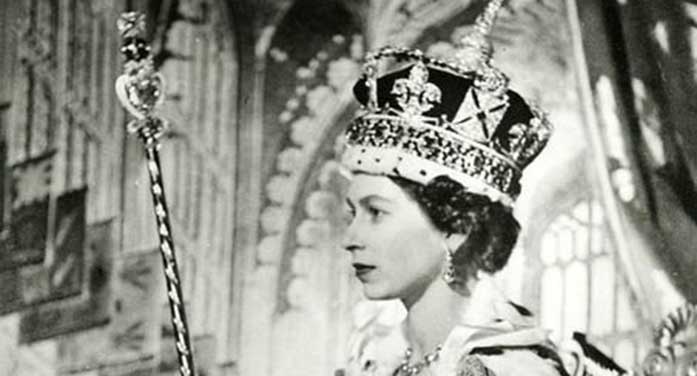 News stories about Queen Elizabeth’s Platinum Jubilee put me in mind of a book by Irish author Mary Kenny. Called Crown and Shamrock, it’s described by historian Roy Foster as a “characteristically breezy, racy and insightful” look at a complicated relationship.
News stories about Queen Elizabeth’s Platinum Jubilee put me in mind of a book by Irish author Mary Kenny. Called Crown and Shamrock, it’s described by historian Roy Foster as a “characteristically breezy, racy and insightful” look at a complicated relationship.
Kenny is five months older than I am and what she writes of Ireland 60 to 70 years ago resonates. Catholic and nationalist, it’s the world I grew up in.
Back then, Kenny was something of a rebel. She was expelled from school at 16 when the nuns decided they couldn’t deal with her anymore. Still, she went on to build a notable career as a journalist and author.
Although Kenny’s early forays into controversy were along predictable lines – she was a leader in the Irish Women’s Liberation Movement – her range of targets and perspectives has broadened over the years. In the true sense of the term, she can be characterized as an independent thinker.
That makes a book like Crown and Shamrock interesting.
| RELATED CONTENT |
| A love letter from Canadian LGBQT artist to the Queen By Owen Grant Innes |
| God save the Queen – so she can save our country By Robert McGarvey |
| The tangled tragedy of Mary, Queen of Scots By Pat Murphy |
When Elizabeth’s father, King George VI, died in February 1952, press coverage in the Dublin media was respectful. Deaths are a sorrowful occasion that call for putting quarrels aside and George was acknowledged to have been a decent man who, under difficult circumstances, discharged a role he’d never wanted. And with Dublin now being the capital of a recognized republic, honouring diplomatic niceties didn’t imply any deference.
However, things got a bit trickier with Elizabeth’s June 1953 coronation. Crown and Shamrock’s introductory chapter tells the tale.
Some Dublin cinemas had originally planned to screen a film of the coronation but dropped the idea after receiving bomb threats from the Irish Anti-Partition League. As Kenny meticulously observes, there was no legal impediment to showing the film. Discretion just seemed the better part of valour.
Instead, various Protestant church halls were offered the opportunity of arranging private screenings, as long as they remained low-key. This was a tacit recognition that Protestants didn’t necessarily fit into the “one of us” category.
While they might be good neighbours, Protestants were different and probably harboured British sympathies. This could be tolerated as long as they kept it to themselves. Kenny likens the situation to that facing Westerners using liquor in some Middle Eastern states: “the practice was to be kept private and discreet, and not paraded in the public realm.”
In truth, though, coronation interest wasn’t confined to Protestants.
Kenny recalls spending that summer with an aunt and uncle who, one evening, deposited her with a neighbour while they went to some hush-hush assignation. As she later discovered, a Protestant friend had invited them – and a few other selected Catholics – to a behind-closed-doors screening of the coronation film at the local Methodist Hall. They eagerly accepted.
It wasn’t a matter of having political sympathies with Britain or being disloyal to the republic. Her uncle, in fact, was a senior Dublin civil servant and fluent Irish speaker. But the chance to savour the pomp and pageantry of an ancient ceremony was too enticing to pass up. Her aunt described it as “like being present at a great event in history.”
So, conscious of engaging in a politically illicit act, her aunt and uncle slipped away to enjoy their guilty secret in private. And Kenny’s research for the book suggests that lots of other Catholics did the same in various other locations.
This Irish interest in British Royal events can be ascribed to factors like historical entanglement, geographical proximity and a shared facility with the English language. There’s also the consideration of human psychology and its apparent affinity for ceremony, pageantry and rituals. Embedded deep in the human psyche, there’s a need.
And on this score, Kenny makes an interesting observation.
For many years after Irish independence, the ceremonials of the Catholic Church functioned as a kind of parallel monarchy. With colourful vestments, incense, gold chalices and processions, there was much to elicit awe and deference.
“It is especially evident from the photographic records of the Irish state from the 1920s onwards: wherever there is a national ritual to be performed, a prince of the Church is wheeled on to perform it, adorned with the full ecclesiastical regalia.” Until well into the 1960s, Irish politicians – including the loftiest – would literally take the knee and kiss the ring.
Notwithstanding our declared adherence to rationality, the soul still wants what it wants.
Troy Media columnist Pat Murphy casts a history buff’s eye at the goings-on in our world. Never cynical – well, perhaps a little bit. For interview requests, click here.
The opinions expressed by our columnists and contributors are theirs alone and do not inherently or expressly reflect the views of our publication.
© Troy Media
Troy Media is an editorial content provider to media outlets and its own hosted community news outlets across Canada.


